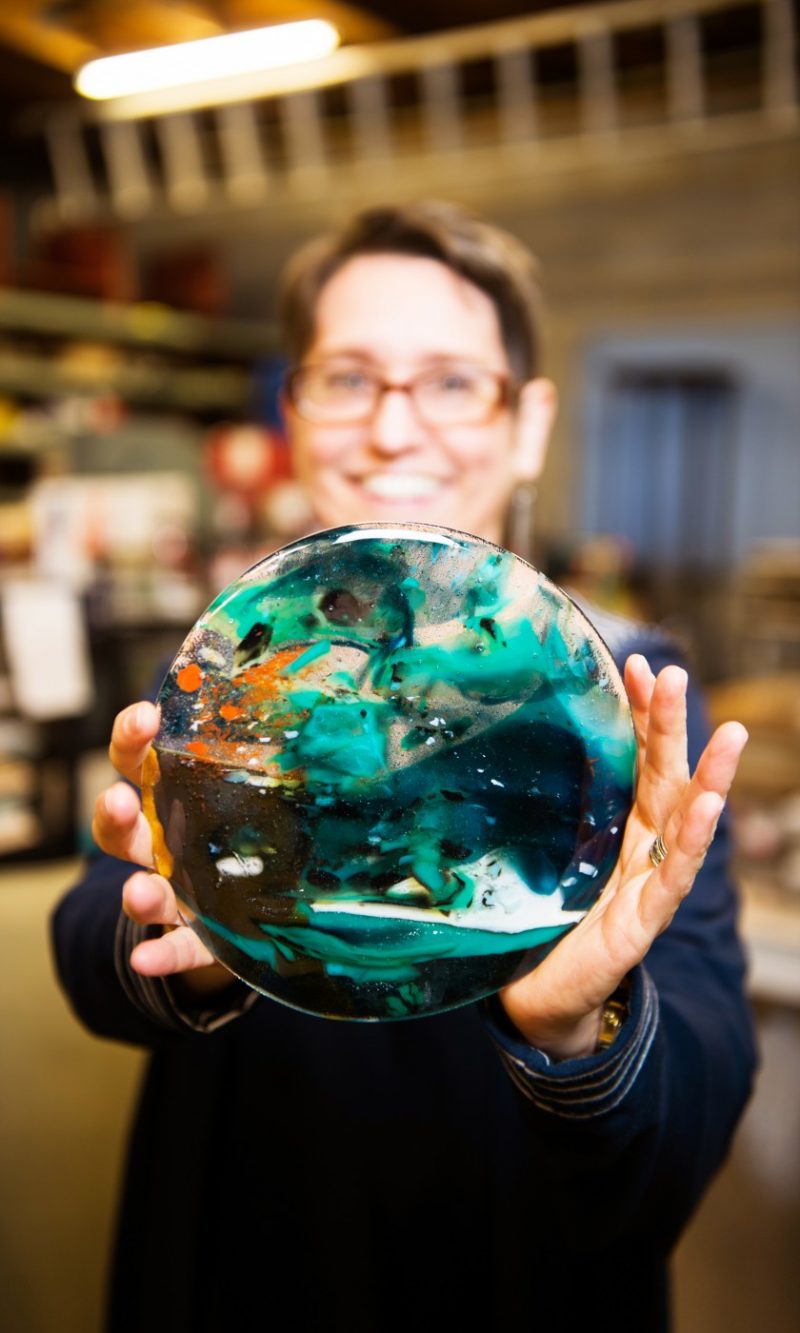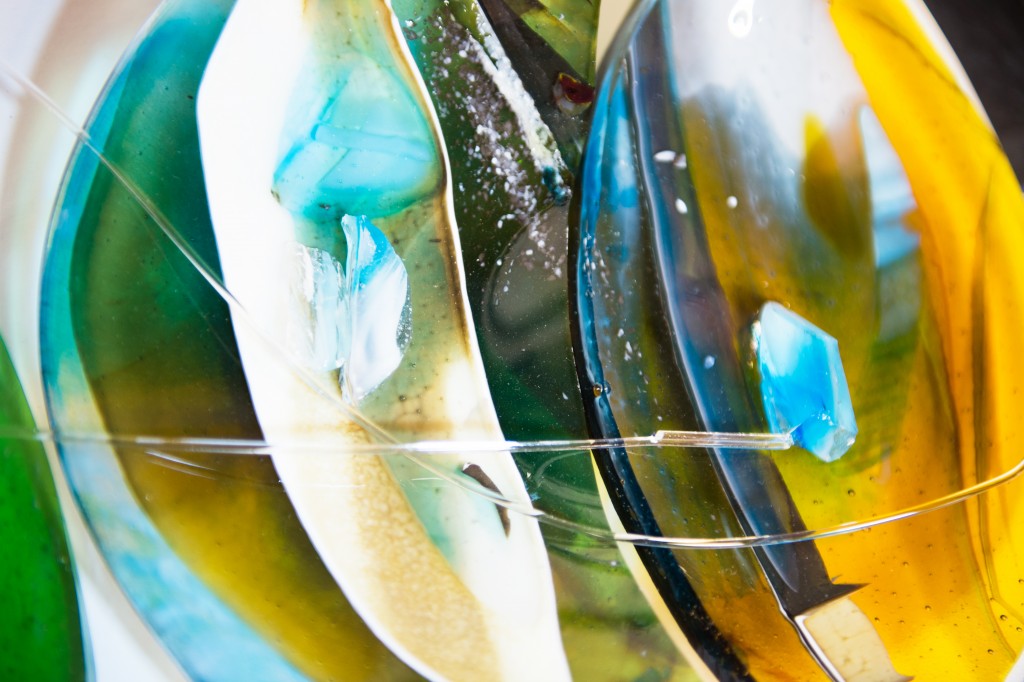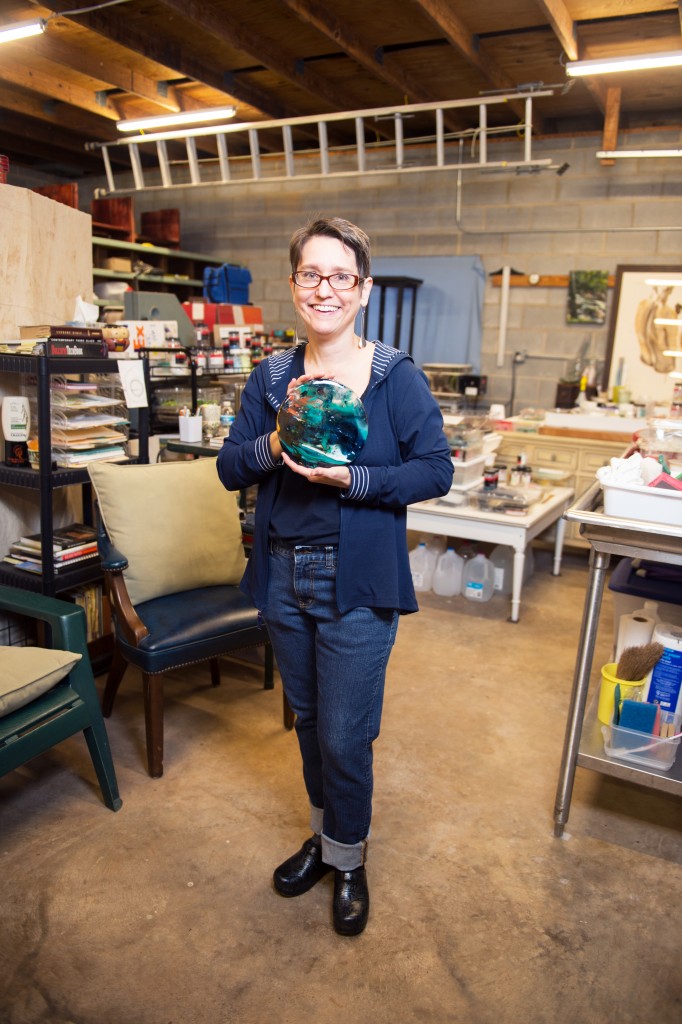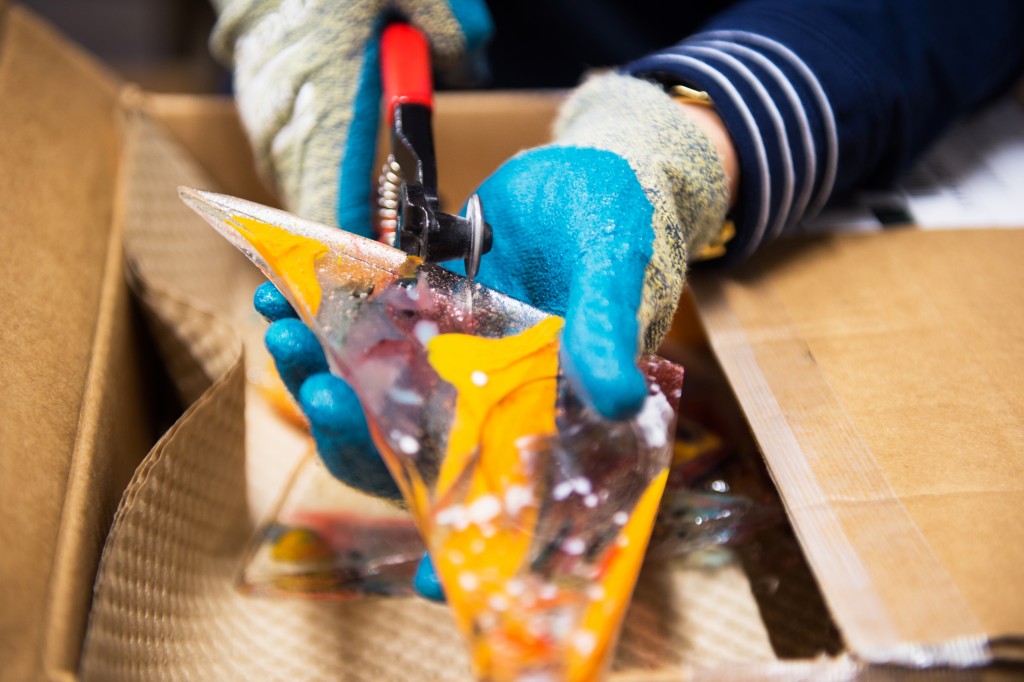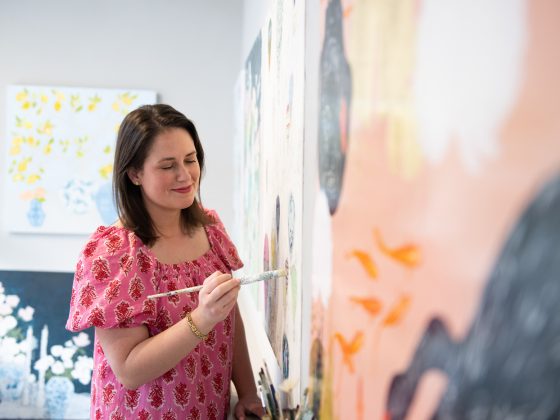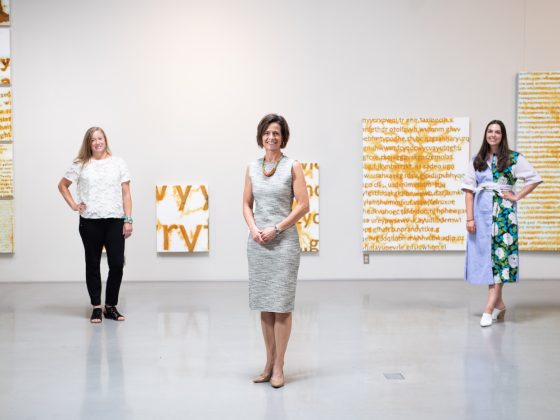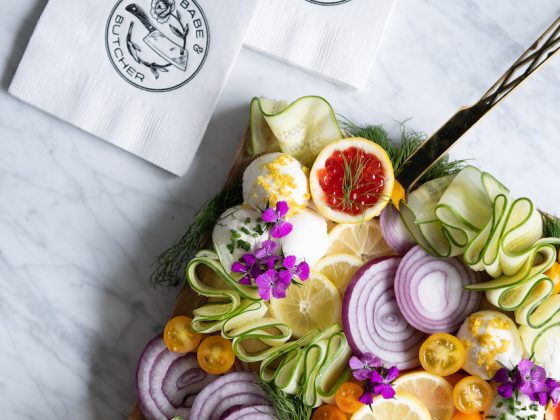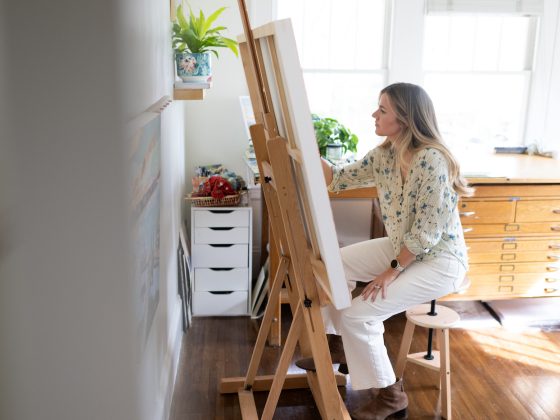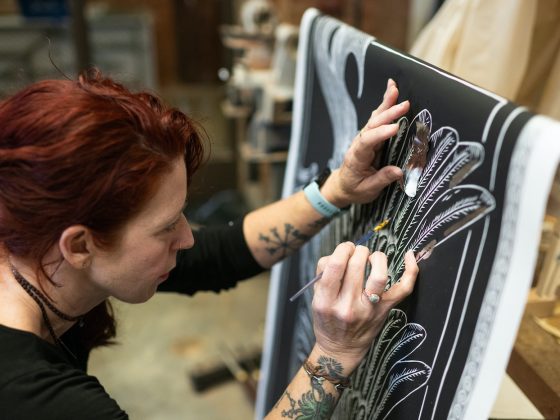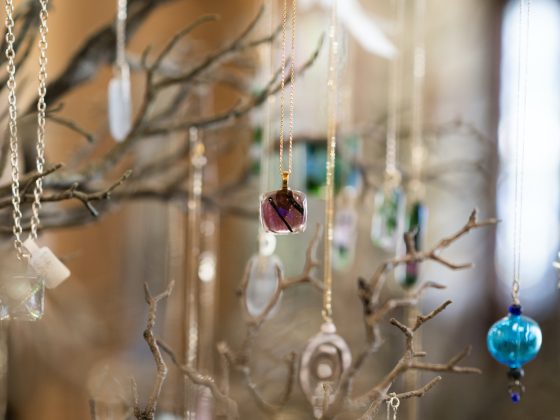Carmella Jarvi has always had a secret fascination with glass. As a professional kiln glass artist, Jarvi transforms the ordinary material into exquisite, breathtaking works of art. Her signature pieces blend tantalizing colors to create organic, elemental gems.
From a young age, Jarvi was drawn to the arts. She could frequently be found copying Flintstone drawings or taking art lessons in Uptown Charlotte. After developing an inescapable passion for the field, Jarvi obtained a fine arts degree from UNC Charlotte. Eventually leaving her “safe art teacher job” behind, Jarvi chose to instead pursue her dream of becoming a full-time artist. Jarvi began her art career by specializing in watercolor, and gained inspiration from the hidden wonders of nature. And still, today, she gets just as excited to talk about and to share her passion as ever. This is perhaps the most striking thing about Carmella—she is so clearly captivated by her artform.
“I love luscious, juicy paintings,” Jarvi begins, “nature abstracted, water-inspired is great, and painterly figures are a favorite. But, I also love abstract sculpture—the kind you want to reach out and touch. This aesthetic meanders into my own work. I am really painting with glass.”
Jarvi’s love of the glass arts had been silenced during the early years of her career, due to the high cost that came with pursuing such an intricate art form. After a particularly enlightening experience, however, the silence was finally broken.
“After a family wedding in Playa del Carmen, Mexico,” Jarvi shares, “swimming in Caribbean waters and underwater caves, my paints were no longer good enough to capture the translucency, intensity, and brilliance of these tropical waters. I knew I had to learn glass.”
Formerly a dabbler in watercolor, pastel, and other paints, Jarvi underwent a culture shock of sorts when she switched her specialty to kiln glass in 2011. Her trademark style today, however, is characterized by glittering glass pieces that resemble the tranquil waters Jarvi so longed to recreate.
“The water inspiration is a little different from many glass artists,” Jarvi recounts. “The fact that I achieve the depth and movement with electric kiln firings and cold working in between gives me a look more like blown glass, though my pieces weigh more.”
There is no need to justify Jarvi’s position within the kiln glass community: Her work speaks for itself. Her art—from the swirling colors of aqua blues and greens to the gleaming products themselves—are both unique and accessible.


